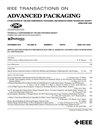A Hierarchical Simulation Flow for Return-Loss Optimization of Microprocessor Package Vertical Interconnects
引用次数: 10
Abstract
Design of package- and board-level interconnects utilizing full-wave electromagnetic solvers, is becoming increasingly important owing to increased frequencies of operation, miniaturization, and reduced time to market. Thus, parameterization, optimization, and statistical analysis tools are becoming an invaluable part of a designer's armory. Leveraging a previously developed fast full-wave electromagnetic solver, this paper addresses the development of a framework for package interconnect design. Parametric sweeps are conducted to show the existence of optimal designs and to select the best routing strategies. Having applied the popular response surface methodology for optimization and having outlined its limitations for higher-dimensional problems, a general optimization scheme is proposed and illustrated on a differential package interconnect line. The proposed methodology features a dimensionality reduction scheme and a reusable, multidimensional look-up table preceding the global optimization phase, which is facilitated by a smooth interpolation scheme based on splines. The second phase features a custom local optimizer incorporating all the variables without any dimension reduction. This methodology has been applied to automated synthesis of a differential package line resulting in a significant improvement of the return loss performance. A statistical analysis methodology, based on utilizing the gradient, has been presented to arrive at the spread in the differential return loss, occurring due to manufacturing tolerances, around the designed response.微处理器封装垂直互连回波损耗优化的分层仿真流程
由于操作频率的提高、小型化和上市时间的缩短,利用全波电磁求解器设计封装级和板级互连变得越来越重要。因此,参数化、优化和统计分析工具正在成为设计师军械库中不可估量的一部分。利用先前开发的快速全波电磁求解器,本文讨论了封装互连设计框架的开发。通过参数扫描来证明最优设计的存在性并选择最佳的路径策略。在应用了流行的响应面优化方法并概述了其对高维问题的局限性之后,提出了一种通用的优化方案,并在差分封装互连线上进行了说明。该方法的特点是在全局优化阶段之前采用降维方案和可重用的多维查找表,并采用基于样条的平滑插值方案。第二阶段的特点是一个自定义的本地优化器,它包含了所有变量,而没有任何降维。该方法已应用于差分封装线的自动合成,从而显著改善了回波损耗性能。本文提出了一种基于梯度的统计分析方法,用于计算设计响应周围由于制造公差而产生的微分回波损失的分布。
本文章由计算机程序翻译,如有差异,请以英文原文为准。
求助全文
约1分钟内获得全文
求助全文

 求助内容:
求助内容: 应助结果提醒方式:
应助结果提醒方式:


